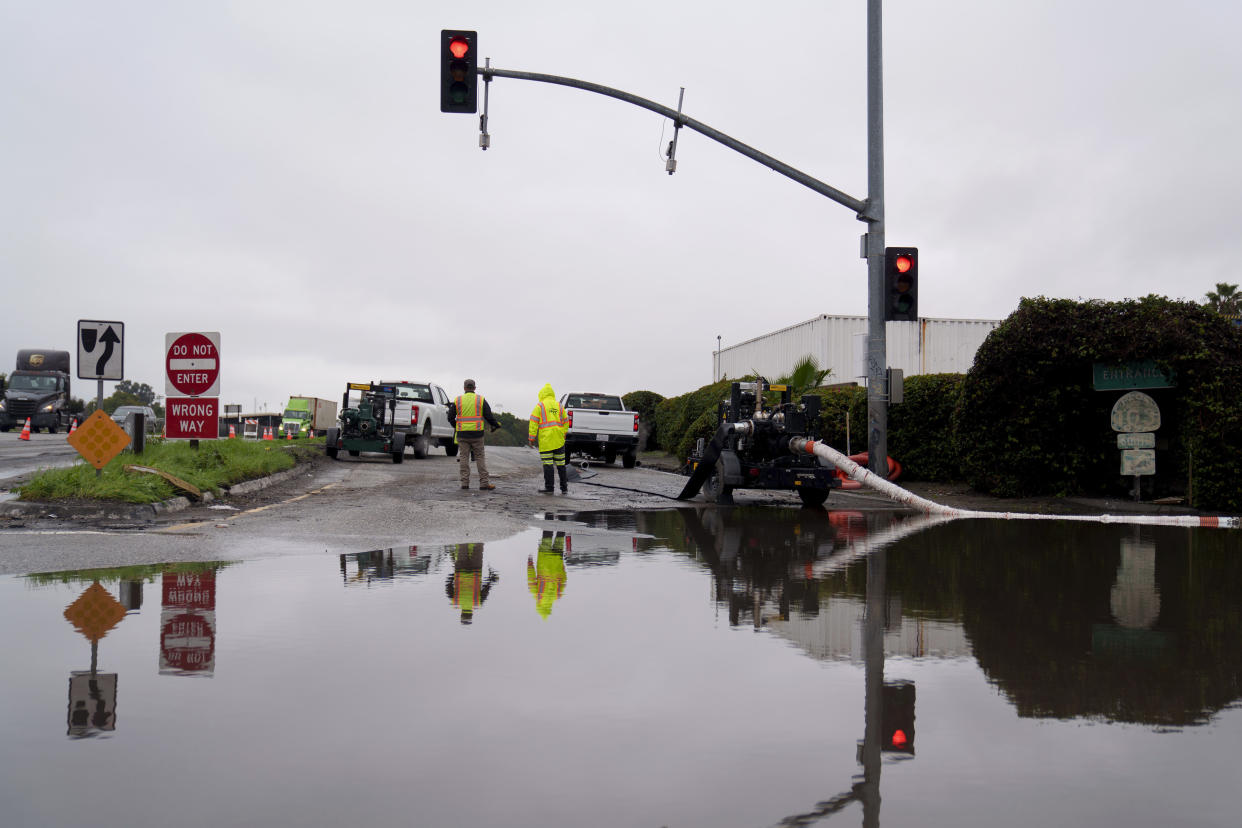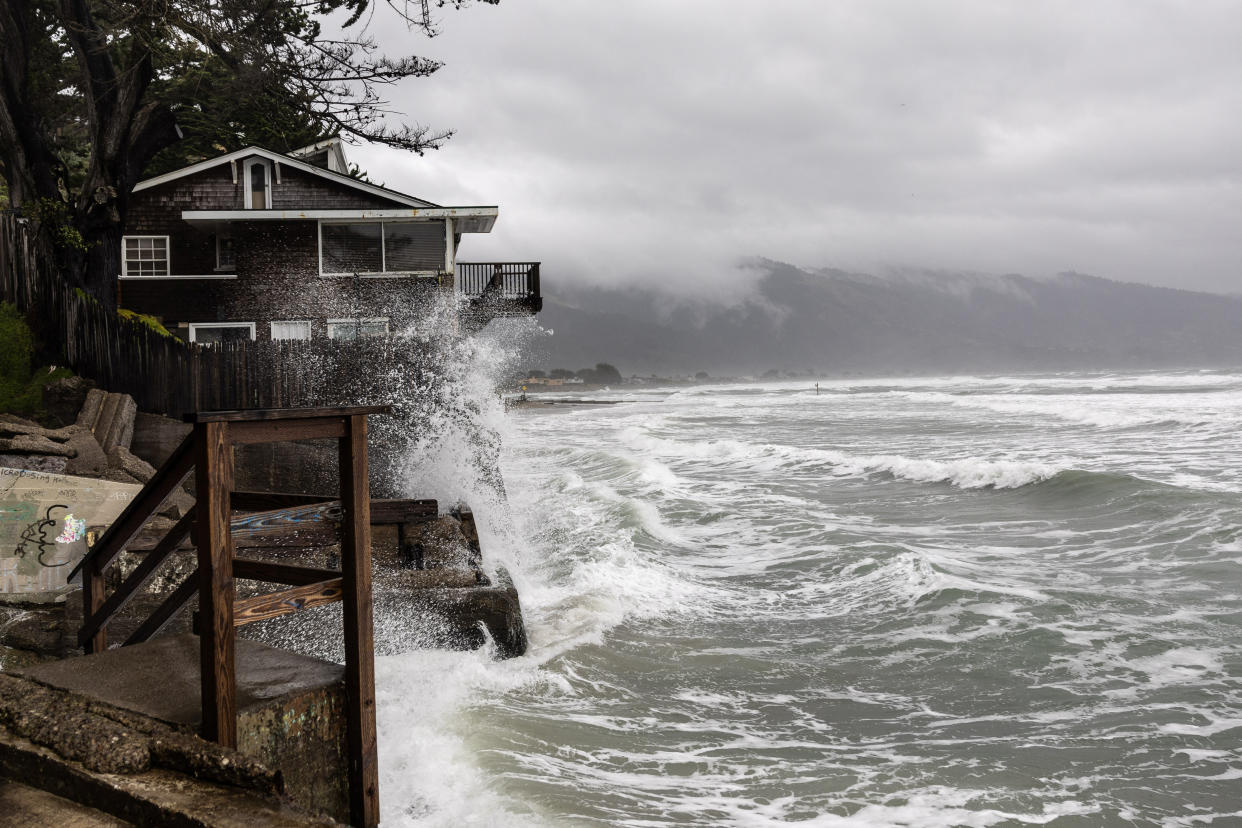Southern California is in the crosshairs of powerful atmospheric river storm

Residents of Southern California are being warned to prepare themselves for a potentially life-threatening atmospheric river storm that is expected to arrive on Sunday that could bring flash flooding and landslides.
“I normally avoid posting weather models, but if you live in Santa Barbara/Malibu I am BEGGING you to prepare like your life is on the line next week. 8-10 inches of rain expected in next 6 days, and this likely an underestimate,” Anthony Edwards, a meteorologist with the San Francisco Chronicle wrote Thursday in a post on X, which was formerly Twitter.
The National Weather Service in Los Angeles warned that Sunday’s storm, the second atmospheric river event this week, had the “potential for significant/damaging flood impacts.”
“Is your home, business or school in a floodplain? Where is water likely to collect on the roadways you most often travel? What is the fastest way to get to higher ground? Knowing the answers to these questions ahead of time can save your life,” NWS Los Angeles said in messages posted to X, adding, "Pack in advance if you are at risk of needing to evacuate. Don't wait until the last moment to gather the essentials for yourself, your family AND your pets."
Computer models continue to update just how bad Sunday’s storm will be for Southern California, and a European simulation predicts as much as 10 inches of rain in 24 hours in some locations and a massive amount of snow at upper elevations.
“Oh my god,” San Jose State University climate scientist Edgar McGregor wrote on X. “EURO ensembles just went nuclear on Los Angeles County. I never seen a precipitation matrix like this in my life.”
Landslide risk

With upwards of three inches of rain having already saturated the ground across much of the state, the addition of several more inches, especially in Southern California, is setting the stage for the possibility of flash flooding and landslides. Coastal mountain ranges are expected to receive a significant amount of rainfall before the second storm moves out of the region next Wednesday.
In 2005, landslides caused by heavy rains killed 10 people and destroyed homes in Ventura County. Twenty-three people were killed in landslides that struck Santa Barbara in 2018 following excessive rainfall.
It's possible upcoming (Sun-Tue) event could bring widespread & significant flood impacts similar to those during Jan 2005 event. No two events are alike, but current indications suggests that folks in/near flood or debris flow prone areas in SoCal should start preparing now.
— Dr. Daniel Swain (@Weather_West) February 1, 2024
What is an atmospheric river?
Sunday’s storm will be the second in a row classified as an atmospheric river event, which the National Oceanic and Atmospheric Administration defines as “narrow regions in the atmosphere that transport much of the moisture from the tropics to northern latitudes.”
A powerful atmospheric river affecting the West Coast was captured in this enhanced-color Air Mass imagery by @NOAA's #GOESWest 🛰️ yesterday. #Flood Watches and Warnings as well as #WinterStorm Warnings and #Wind Advisories are in effect in parts of California today.
Latest:… pic.twitter.com/JhBMOxmnrr— NOAA Satellites (@NOAASatellites) February 1, 2024
California receives the bulk of its annual rainfall courtesy of atmospheric river storms each year, but rising global temperatures, which are raising evaporation rates, could be increasing the amount of precipitation falling during recent storms.
“Ocean temperatures both near the coast and extending southwestward across much of [the] North Pacific are much warmer (+2-5F) than average. Why does this matter?” UCLA climate scientist Daniel Swain wrote in a post on X. “This warm ocean increases [the] amount of moisture in lower levels of [the] atmosphere (& thus in storms) due to increased evaporation, and may also be contributing to apparent propensity for extreme hourly t-storm downpours this year in coastal CA by boosting convective instability.”
The appetizer to Sunday’s main course
The atmospheric river storm that slammed into California on Wednesday was weaker than the one expected on Sunday. Still, it caused coastal flooding across Los Angeles County, including Long Beach, where Highway 1 was intermittently closed. Strong winds toppled trees in many locations in the northern part of the state.
While the center of circulation of Wednesday’s storm was far out to sea, Sunday’s will be much closer to land, Swain told reporters during a Wednesday webcast. The system is forecast to intensify as it nears the Northern California coast and a serious risk of flooding will extend from Santa Barbara to San Diego counties.
